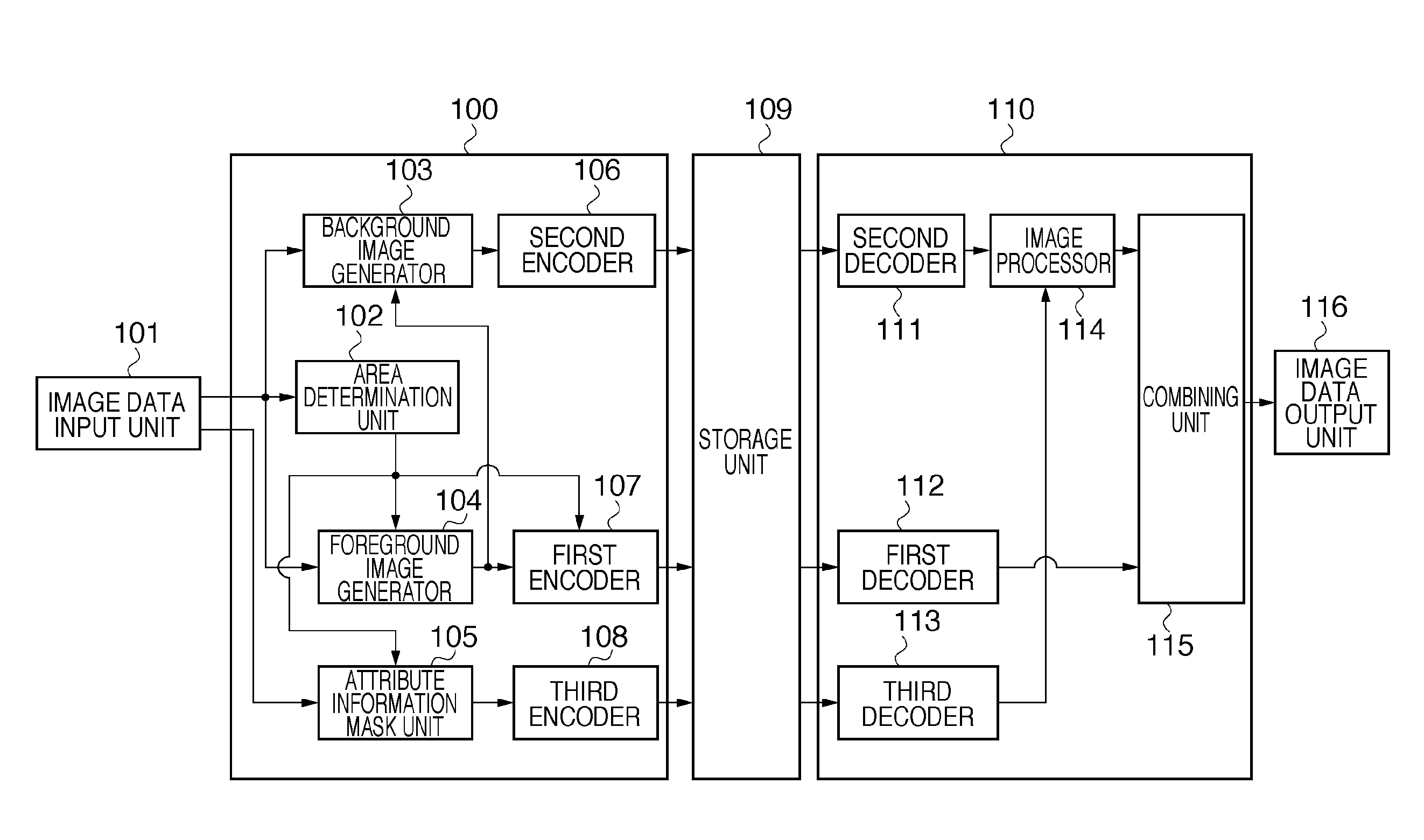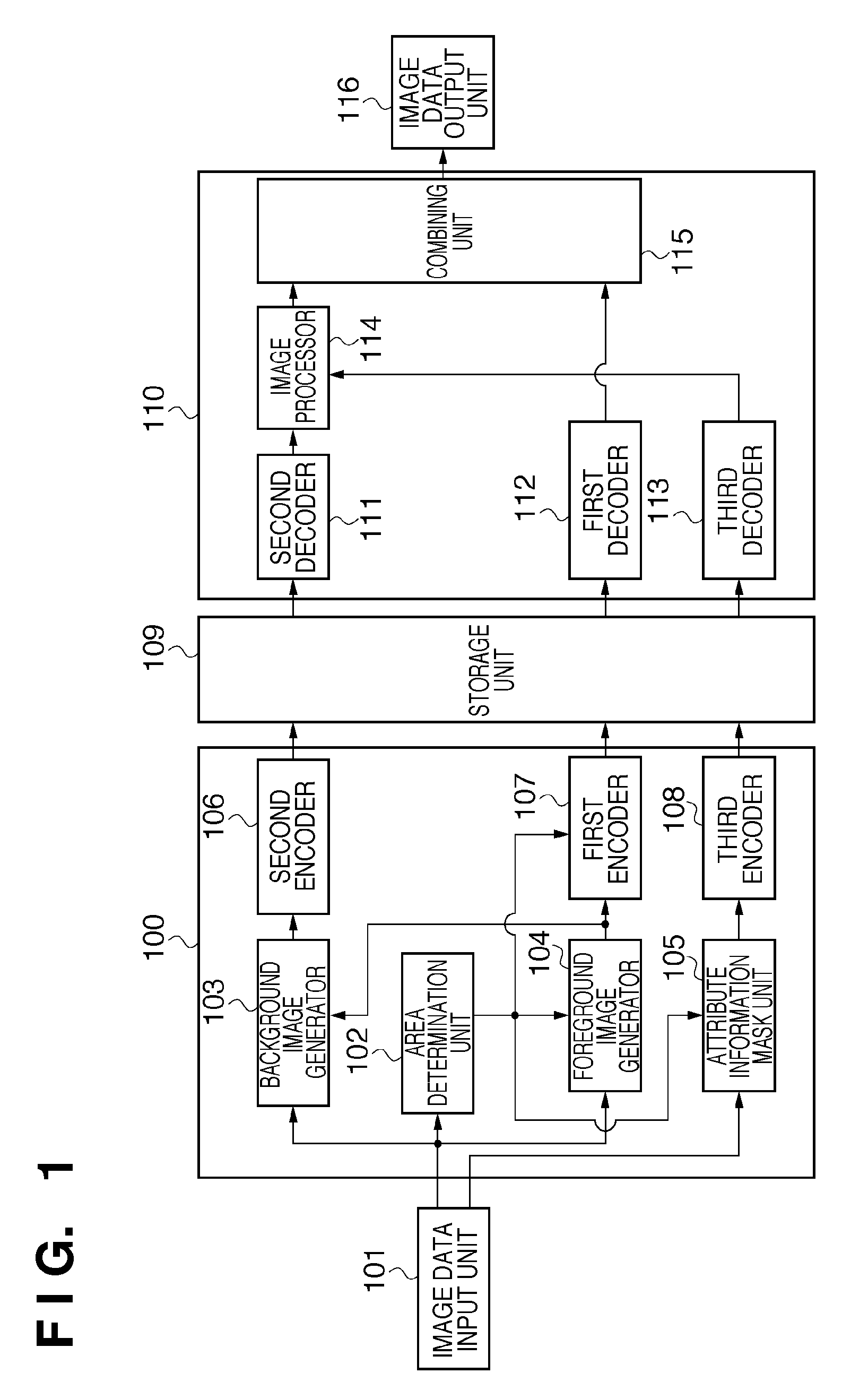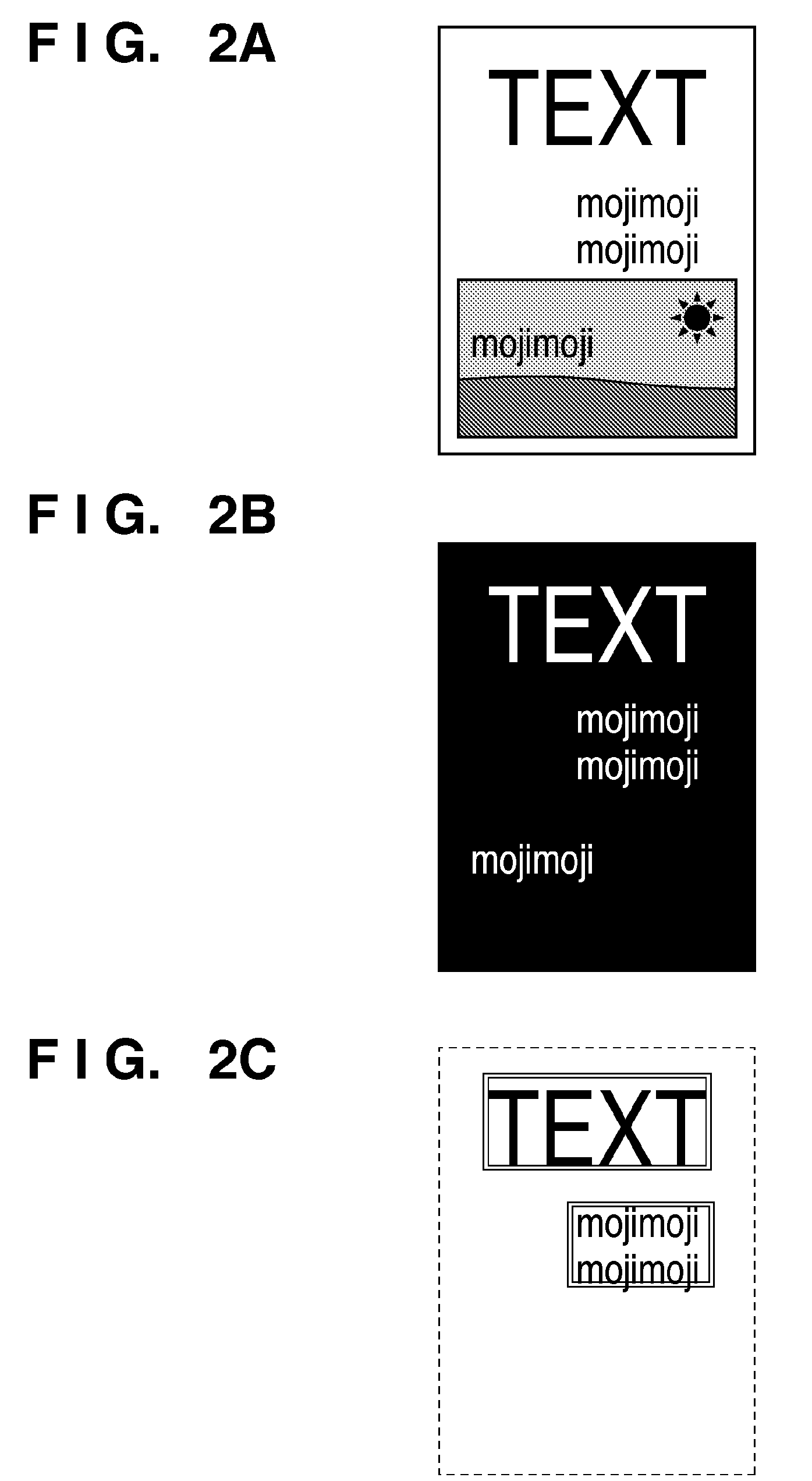Image encoding apparatus, image processing apparatus and control method thereof
a technology of image data and image processing apparatus, applied in the field of image data encoding, can solve the problems of increasing the amount of attribute data and the inability to obtain excellent image quality, and achieve the effect of reducing the amount of attribute data and improving the quality of output images
- Summary
- Abstract
- Description
- Claims
- Application Information
AI Technical Summary
Benefits of technology
Problems solved by technology
Method used
Image
Examples
first embodiment
Modification of First Embodiment
[0068]The same processing as that in the above-described first embodiment may be realized with a computer program. Hereinbelow, the case where the processing is realized with software will be described.
[0069]FIG. 7 is a block diagram showing the basic configuration of an apparatus (PC or the like) when the processing is realized with software.
[0070]In FIG. 7, reference numeral 1401 denotes a CPU which controls the entire apparatus using a program and data stored in a RAM 1402 and / or a ROM 1403, and performs image encoding processing and decoding processing to be described later.
[0071]The RAM 1402 holds programs and data from an external storage device 1407 or a storage medium drive 1408, or downloaded from an external device via an I / F 1409. Further, the RAM 1402 is used as a work area for execution of various processings by the CPU 1401.
[0072]The ROM 1403 holds a boot program, setting program of the present apparatus and data.
[0073]Numerals 1404 and ...
second embodiment
[0079]In the above-described first embodiment, the background image generator 103 generates a new background image by replacing pixel values of multi-valued image data corresponding to “1” pixels of a character image generated by the foreground image generator 104 with a value of a replacement color.
[0080]Generally, when an original having only characters is read as a multi-valued image with an image scanner, regarding a character edge as a boundary, an area outside the edge is not always white and an area within the edge is not always complete black. That is, in the neighborhood of an edge boundary, the luminance (or density) varies at a certain grade. Accordingly, even when multi-value pixel data in a pixel position determined as a character / line drawing is replaced with a replacement color, in a non-replacement pixel area adjacent to the replaced pixel, the density may be greatly changed due to the influence of an initial character color. In other words, there is a high possibili...
third embodiment
[0091]FIG. 6 is a block diagram of the multi-function apparatus according to a third embodiment. The difference from FIG. 1 is that the output from the first decoder 112 in the output image processor 110 is supplied to the third decoder 113. As the constituent elements are the same as those in the first embodiment except the output from the first decoder 112, the explanations of those elements will be omitted.
[0092]In the third embodiment, when character image data obtained by decoding by the first decoder 112 (binary image data) is “1”, the third decoder 113 outputs the result of decoding of the attribute data, even if it is “0” (a pixel constituting a character / line drawing), as “1”, to the image processor 114. On the other hand, when the character image data obtained by decoding by the first decoder 112 (binary image data) is “0” (a pixel of a non-character / line drawing), the third decoder 113 outputs the attribute data obtained by decoding to the image processor 114.
[0093]In thi...
PUM
 Login to View More
Login to View More Abstract
Description
Claims
Application Information
 Login to View More
Login to View More - R&D
- Intellectual Property
- Life Sciences
- Materials
- Tech Scout
- Unparalleled Data Quality
- Higher Quality Content
- 60% Fewer Hallucinations
Browse by: Latest US Patents, China's latest patents, Technical Efficacy Thesaurus, Application Domain, Technology Topic, Popular Technical Reports.
© 2025 PatSnap. All rights reserved.Legal|Privacy policy|Modern Slavery Act Transparency Statement|Sitemap|About US| Contact US: help@patsnap.com



